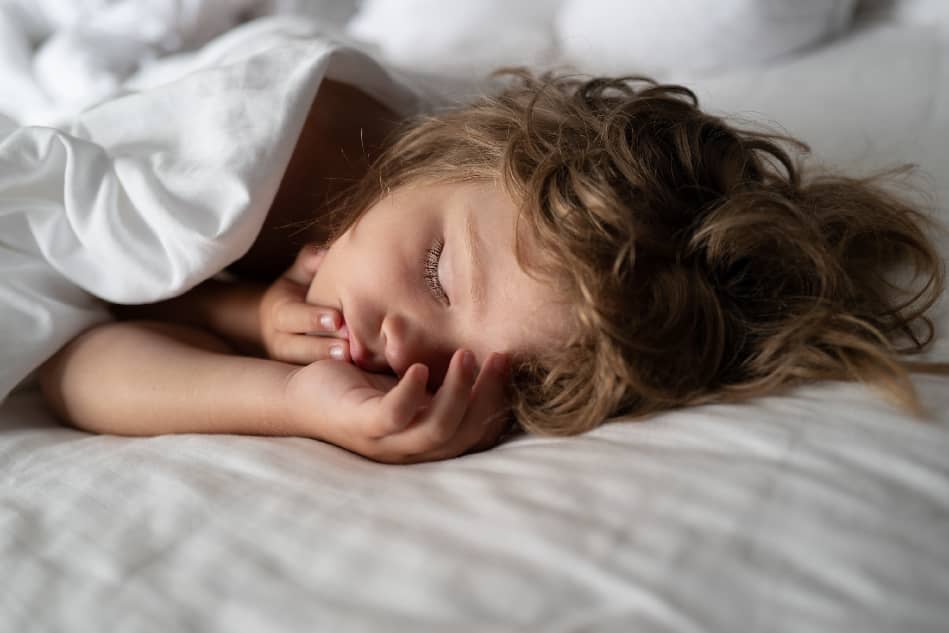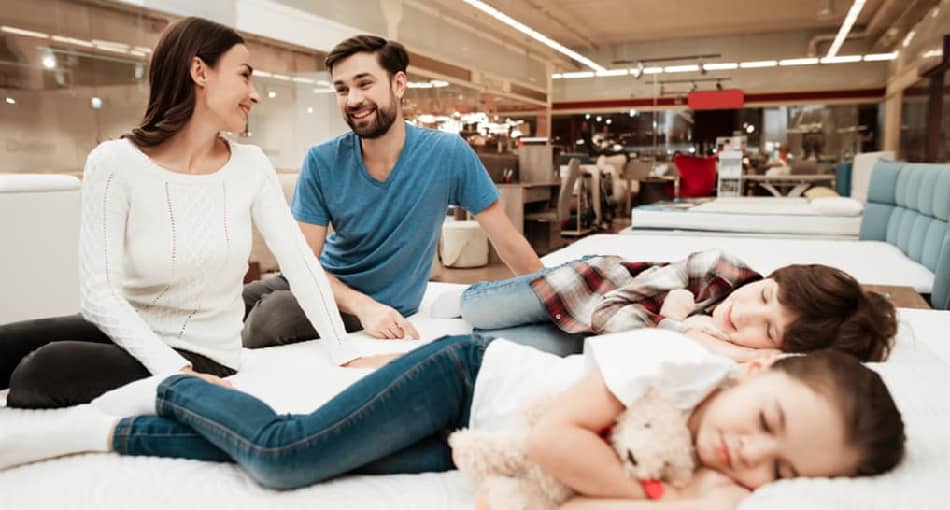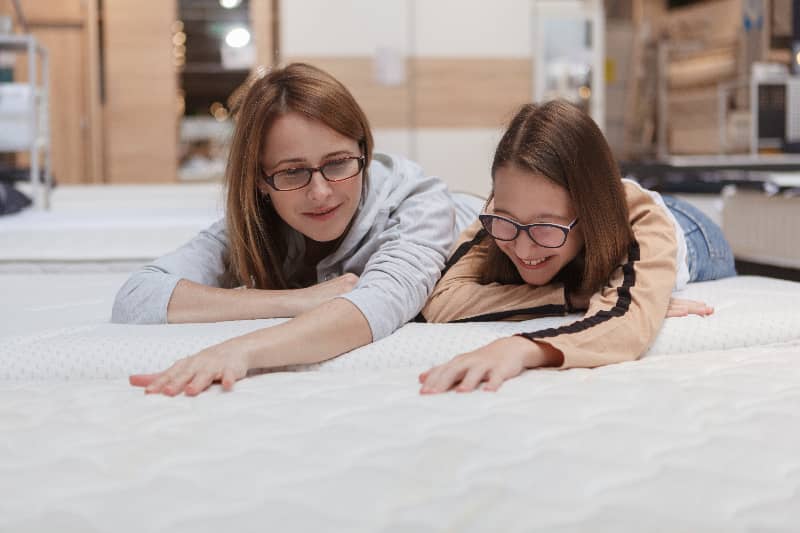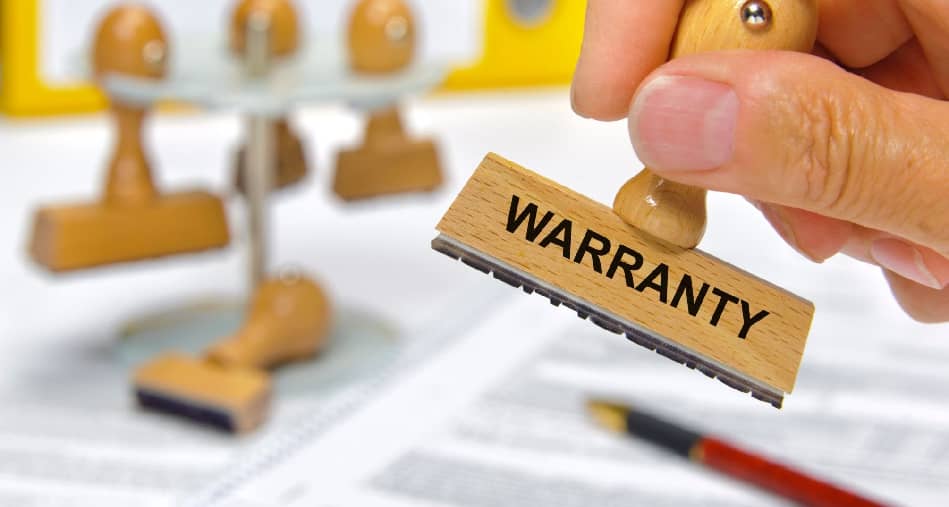Choosing the best mattress for kids requires serious consideration. Research proves that a child’s neurological development is proportional to his/her sleep quality. Sound sleep is essential for a kid’s health, wellness, and growth. Therefore, it is important for you to understand the properties of the best kid’s mattresses and important buying considerations.
Every child has unique slumber needs, and parents want only the best for their young ones. No one mattress is best for your kid. Much depends on your child’s physique, sleep style, likes, and dislikes. Moreover, a kid-friendly mattress needs to have certain qualities to ensure safe and healthy sleep for your child.

| Comparison Table | |||||
|---|---|---|---|---|---|
| Mattress | Category | Pros | Cons | Certifications | Sleep Trial & Warranty |
| Nest Bedding Love & Sleep Full review | Foam Mattress
|
|
|
|
|
| Brooklyn Bowery Full review | Foam Mattress
|
|
|
|
|
| Signature Sleep Contour Full review | Hybrid Mattress
|
|
|
|
|
| Nest Bedding Big Kid's Bed Full review | Foam Mattress
|
|
|
|
|
| Naturepedic 2-in-1 Organic Cotton Ultra Quilted Mattress Full review | Innerspring Mattress
|
|
|
|
|
| 5 Little monkeys sleep system Full review | Memory foam mattress
|
|
|
|
|
| Puffy Full review | Foam Mattress
|
|
|
|
|
| Leesa Full review | Foam Mattress
|
|
|
|
|
| Zenhaven Full review | Natural Latex Mattress
|
|
|
|
|
| IKEA Husvika Full review | Innerspring Mattress
|
|
|
|
|

| Mattress name | Price of Twin ($) | Price of Twin XL ($) | Price of Full ($) | Price of Queen ($) | Price of King ($) | Price of Cali King ($) | Other Sizes ($) | |
|---|---|---|---|---|---|---|---|---|
| Nest Bedding Love & Sleep | 400 | 430 | 550 | 600 | 750 | 750 | Split King (1)- 530 Split Cali King (1)- 530 | Buy Now Get Discount |
| Brooklyn Bowery | 500 | 550 | 650 | 700 | 950 | 950 | N/A | Buy Now Get Discount |
| Signature Sleep Contour | 124 | N/A | 190 | 251 | 303 | N/A | N/A | Buy Now Get Discount |
| Nest Bedding Big Kid’s Bed | 300 | 400 | 500 | N/A | N/A | N/A | N/A | Buy Now Get Discount |
| Naturepedic 2-in-1 Organic Cotton Ultra Quilted Mattress | 750 | 900 | 1000 | N/A | N/A | N/A | Twin Trundle 71-inch - 750 Twin Trundle 75-inch - 750 | Buy Now Get Discount |
| 5 Little monkeys sleep system | 500 | N/A | 800 | N/A | N/A | N/A | N/A | Buy Now Get Discount |
| Puffy | 795 | 825 | 995 | 1150 | 1350 | 1350 | N/A | Buy Now Get Discount |
| Leesa | 595 | 695 | 895 | 995 | 1195 | 1195 | N/A | Buy Now Get Discount |
| Zenhaven | 1300 | 1350 | 1700 | 1900 | 2500 | 2500 | N/A | Buy Now Get Discount |
| IKEA Husvika | 120 | N/A | N/A | N/A | N/A | N/A | N/A | Buy Now Get Discount |
Kids seem to outgrow everything ever so quickly, and admittedly, no one wants to purchase a new mattress every year. A carefully chosen product can ensure a comfortable and health-promoting snooze for the child at least 7 to 8 years on the same bed.
For the kids, a bed isn’t a place reserved for rest — it’s where they do their homework research, have fun during sleepovers, share secrets with their friends and siblings, munch their favorite snacks, share secrets, shed tears, and jump in joy! All this needs to be taken into account before you begin the mattress hunt for your children.
Some of the common concerns that arise during kids’ mattress shopping are:
Let us address all of these and more, and guide you to the best products to improve your kid’s sleep.

Whether you’re buying for preschoolers, tweens or teens narrows your options for the mattress size and thickness. Below are some points to consider:
In the case of bed sharing, full size is worth the extra money. It can accommodate your preteen through the growth spurt and has enough space for teens to move around in sleep.
Factor in the weight group, height, and growth potential of the child. The mattress should be big enough to offer the kids the best support.
| Build |
|
| Height |
|
The dominant sleep position tells you how firm a kid's mattress should be. It also clues you about the preferred mattress materials suitable for achieving that comfort level.
Dominant Sleep Position | Suitable Firmness | Preferred Mattress Material |
|---|---|---|
| Back sleepers | Medium to Medium-firm | Pocketed coils |
| Side sleepers | Soft to Medium | Soft to Medium |
| Stomach sleepers | Medium | Latex |

Your lifestyle and your child's activity level has a lot to do with your mattress selection.
Organic and/or natural sleep surfaces are best for allergy-prone kids. Moreover, manufacturers nowadays use various allergen-resistant, antimicrobial materials for healthy mattresses for kids. Some of the common mattress components to look for are:
Medical conditions like asthma, sleep apnea, scoliosis or other musculoskeletal diseases can make deep sleep a distant dream for a child. The sleep deprivation and fatigue can further exacerbate the symptoms. Deep sleep aids recovery and uplifts the mood, and a right mattress can significantly improve the kid's restfulness, one night at a time.
Latex and waterbeds are said to improve sleep apnea symptoms owing to the relatively less sinkage and enhanced support. Zoned or graduated support adapts better to different postures and growing bodies of preschoolers and preteens. Alternatively, adjustable firmness mattresses allow you to alter the comfort level to suit the kids best.

Always keep the growth factor in mind. Remember to factor in the foundation size as well.
| Size | Suitability |
|---|---|
| Twin |
|
| Twin XL |
|
| Full |
|
| Queen |
|
| King |
|
| Cal King |
|
Comfort level is subjective and therefore, choosing right mattress firmness for the child becomes a difficult decision for the parents. One objective way is to match the child's weight to bed's ILD (Indentation Load Deflection). ILD gives you a pretty accurate idea about the suitable mattress firmness for the child.
| Firmness | ILD |
|---|---|
| Plush | Less than 25 lbs |
| Medium | 25 lbs - 31 lbs |
| Firm | More than 31 lbs |
Medium firmness is likely best for preschoolers or younger kids who do not have fixed snooze patterns yet. Adjustable firmness mattresses allow the kids to change the comfort level as their firmness requirements change.
Kids benefit from a supportive mattress with subtle bounce and just the enough sinkage. Healthy sleep posture is crucial for a child's proper growth. A supportive mattress maintains proper sleep posture and provides an even surface feel.
Kids usually sleep hot, so look for a neutral or cooling mattress. Some materials are naturally hot or cold, but you can use various market solutions to achieve a neutral sleep temperature for your child.

Off-gassing is the release of chemicals from the mattress when you unbox it. The odor can be strong and lingering or unnoticeable depending on the construction materials. In large amounts, these gases can cause allergies, respiratory problems, and some are carcinogenic as well. However, generally mattress emissions are rigorously tested for safety levels before approved for sale.
In any case, off-gassing stops and chemicals drift away on their own within a few days of airing out the mattress.
Some kids, especially tweens take a lot of time to fall asleep. Minor disturbances can prevent them from entering the coveted, deep REM sleep. Motion and noise disturbances are important considerations if:
Foam mattresses have least motion transfer and since they have no coils, they minimize noise disturbance as well. If you choose innerspring mattress, look for foam side rails that muffle any sounds. Most mattresses use pocketed coils nowadays that are wrapped in foam or fabric, thus, eliminating any noise or motion disturbances.
Kids can put anything in their mouth or worse, nose, absentmindedly. The risk of choking is especially real for preschoolers and early tweens. A childproof mattress design ensures the absence of any small parts that can come loose.
Reversible beds may last the entire childhood of the young ones, well into their teenage years.

Parents have been favoring innerspring mattresses for their children since long. However, given the abundant choices, many customers ask, is a memory foam mattress good for a child or will my kids benefit from the therapeutic effects of a waterbed.
In fact, memory foam, latex, and waterbeds, all are proving their merit as kids mattress as well. Much depends on the personal preferences and child's sleep styles. So, let's dig deeper and study the distinguishing features of each mattress material separately.
| Category | Pros | Cons | Market Solutions |
|---|---|---|---|
| Memory Foam Mattresses |
|
|
|
| Innerspring Mattresses |
|
|
|
| Hybrid Mattresses |
|
|
|
| Latex Mattresses |
|
|
|
| Waterbeds |
|
|
|
| Air beds |
|
|
|

Choose the Best Value Mattress for Kids
Weigh the price against quality, durability, and intended duration of use to evaluate and compare the value of your shortlisted mattresses.
As kids grow, their sleep needs change and so does their mattress requirements. For this reason, you shouldn't invest in a very expensive bed, especially for adolescents. As such, high price equals high-quality is a MYTH in the mattress market. Price alone is an insignificant measure of quality or product value. However, the average price for each type of mattress gives you a useful reference point to set your budget.
Higher price than this range should have some additional value proposition. For a lower price, look for the catch!
| Mattress Category | Average Market Price |
|---|---|
Memory foam | Between $800 and $1200 |
Latex | Between $1500 and $2000 |
Hybrid | Between $850 and $1500 |
Innerspring | Between $800 and $950 |
Air bed | Between $1600 and $2000 |
Waterbed | Between $200 and $500 |
You might overlook durability, given that a child is expected to sleep on a mattress for around 7-8 years only (average lifespan of a regular mattress). However, durable mattresses use high-quality materials that directly impact the rest quality. Read beyond the labels and find out specifications, especially the foam densities. Only then can you ascertain the actual quality and durability expectancy of the products.
| Mattress Material | Durable Version |
|---|---|
Memory foam | 5 lb or higher |
Polyfoam | 2 lb or higher |
Innerspring | 13 gauge or lower |
Latex | Natural (Dunlop/Talalay) |
Longer the trial period, the better. In-home trials are best way to test whether a sleep surface suits your child or not. Since kids might not be able to understand or convey their sleep needs, their slumber quality during trial helps you take the decision with confidence. Sleep trials range from 90 days to as long as a whole year — most online mattress brands give you 100 days to test the mattress at home. Since most returned mattresses are donated, consider using a mattress protector to prevent soiling.

Longer warranty period not only provides some peace of mind but can also indicate the durability and quality of the mattress. Most mattresses come with a 10-year warranty. Latex mattresses are usually protected under warranty for 15-20 years. Some brands provide lifetime warranty as well. Sometimes warranties are accompanied by comfort guarantees. Products providing comfort guarantees offer free or discounted mattresses if you wish to change the firmness of your bed within the allotted time period.
Kids are messy, and a low-maintenance mattress is undoubtedly a priority for every parent. Look for the following qualities in a mattress:
A comfortable mattress for kids lays the foundation for better sleep habits. As a result, your child's health and wellness improves. Once you've further narrowed down your search, you can use SleePare Mattress Comparison tool to reach a well informed, confident decision.
What Mattress Category/Type Is Good For You?
5 Sure Shot Ways to Test the Perfect Mattress Firmness in Store
Comprehensive Guide to Clean your Mattress

 Showrooms
Showrooms
Meet The Author:
Shanir Kol
Shanir Kol, founder and CEO of SleePare, pioneered the “Try and Buy” model in eCommerce, enhancing mattress shopping by combining in-store trials with online purchases. Launching in 1999, his company focuses on customer satisfaction and eco-friendly practices, aiming to minimize mattress waste and expand sustainably.